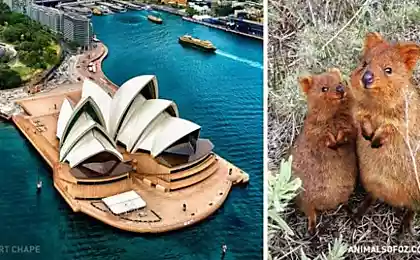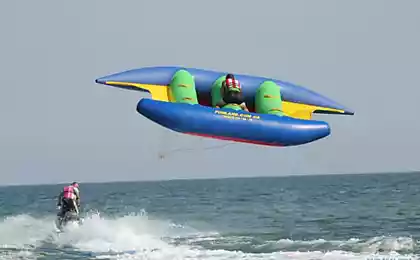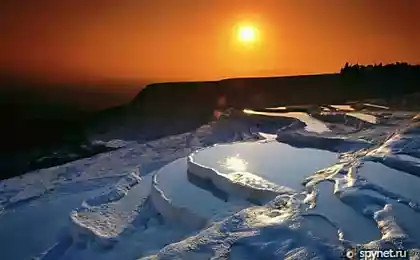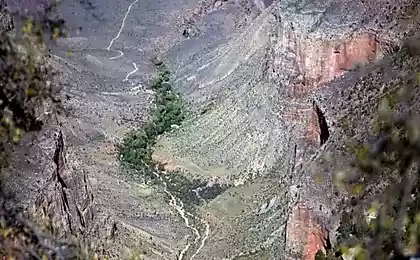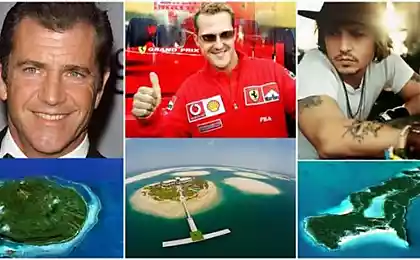3032
Great Barrier Reef - Coral Sea, Australia

Great Barrier Reef - a ridge of coral reefs and islands in the Coral Sea, which stretches along the north-east coast of Australia 2300 km. In the northern part of its width is 2 km in the south - 150 km. Most of the reef is under water (which are exposed at low tide).
In 1979 there was founded Marine National Park with an area of over 5 million. Ha. History of the Great Barrier Reef has about 18 million years. The modern history of its development lasts for about 8000 years. On the old foundation is still there are more layers. The main part of the reef covers more than 2,100 individual reefs, which are surrounded by nearly 540 barriers, forming offshore islands.
Between the reef and the coast extends lagoon. The area of shoals rarely exceeds a depth of 100 m. From the sea, reef slopes steeply fall on thousands of meters into the sea.

Barrier at this point is influenced by waves and winds. Coral growth here is the fastest, while in places where the waves reach extreme temperatures and heights reefs lose the greatest amount of construction material. Most of the free stuff woven into new forms reefs and rocks, so on the reef, there are constant, successive processes of destruction and subsequent recovery.

Due to the variety and colorful underwater world in the territory of the Reef, and almost always warm clear sea water, this place is extremely popular among tourists, especially fond of diving. For this reason, large island, located near the Great Barrier Reef turned into a luxury tourist resorts.

Formation of such a unique natural formation began about 10,000 years ago. Presently consists of approximately 2,900 reefs and 300 islands. Reef area is 348,698 square meters. km.
Coral reefs are the product of a long cycle of life and death. The fact that the majority of existing reef is composed of the remains of previous generations of polyps, which are coated with a layer of living organisms.

Opened the Great Barrier Reef was Captain Cook during a trip in 1770 along the coast of Australia. The expedition almost ended tragically when the ship suddenly sat down on one of the reefs near Cape Tribuleyshn. But dropping a significant part of provisions, the ship managed to refloat and the journey continued.
No doubt that this natural formation attracts tourists. Each year, the Great Barrier Reef is visited by thousands of tourists. Accommodation in comfortable hotels, beautiful beaches and the chance to live to see the splendor of the underwater world of reefs.

Reefs was chosen by a lot of amazing birds and marine animals, most of which can be found only here. But the most interesting in the Great Barrier Reef is the observation of marine life.
Between colorful coral bizarre shapes sweep bevy of bright tropical fish. At such moments, you feel like a man accidentally fell into another fairy-tale world.
In the waters of the reef is home to about 500 different species of fish, of which the most common trout, sea bass, swordfish, barracuda, black marlin, shark and others. Inhabit the world of reefs and sea turtles. All of these mammals, there are 6 types, all of which are threatened with destruction. Occasionally reef waters can be seen whales and dolphins.
On the territory of the reef can be found some of the most beautiful sea shells in the world. Shells of molluscs some so large that can reach 200 pounds!
In the Great Barrier Reef coral growth rate is among the highest in the world, thanks to the favorable climate and water temperature 24-28 degrees. Most of the building material is woven into the reefs and the formation of new rocks. Under the water there is a constant process of destruction of the old and the formation of deposits. In total, the Barrier Reef is located about 400 different species of coral.
Most people think that the underwater education virtually indestructible and they are in no danger, but it is not. In 60-70 years of the last century, all this beauty had almost been destroyed. In the waters of the reef greatly increased population of sea stars, called "crown of thorns". Starfish attach themselves to the coral formations and released them in the digestive juice. After this procedure, the coral rapidly destroyed. It has been estimated that in the year one such star is capable of destroying up to 6 square meters. km. reef!
This rapid population growth "crown of thorns" was associated with the disappearance of snail newts, which are natural enemies of these sea stars. Snails caught as souvenirs for tourists, so you might say, and there has not been without a man ...
Now snails are no longer hunted, and their numbers are slowly getting back to normal. With an unfortunate sea stars are fighting and scuba divers armed with poison needles. Gradually the biological balance in the Barrier Reef comes back to normal.




